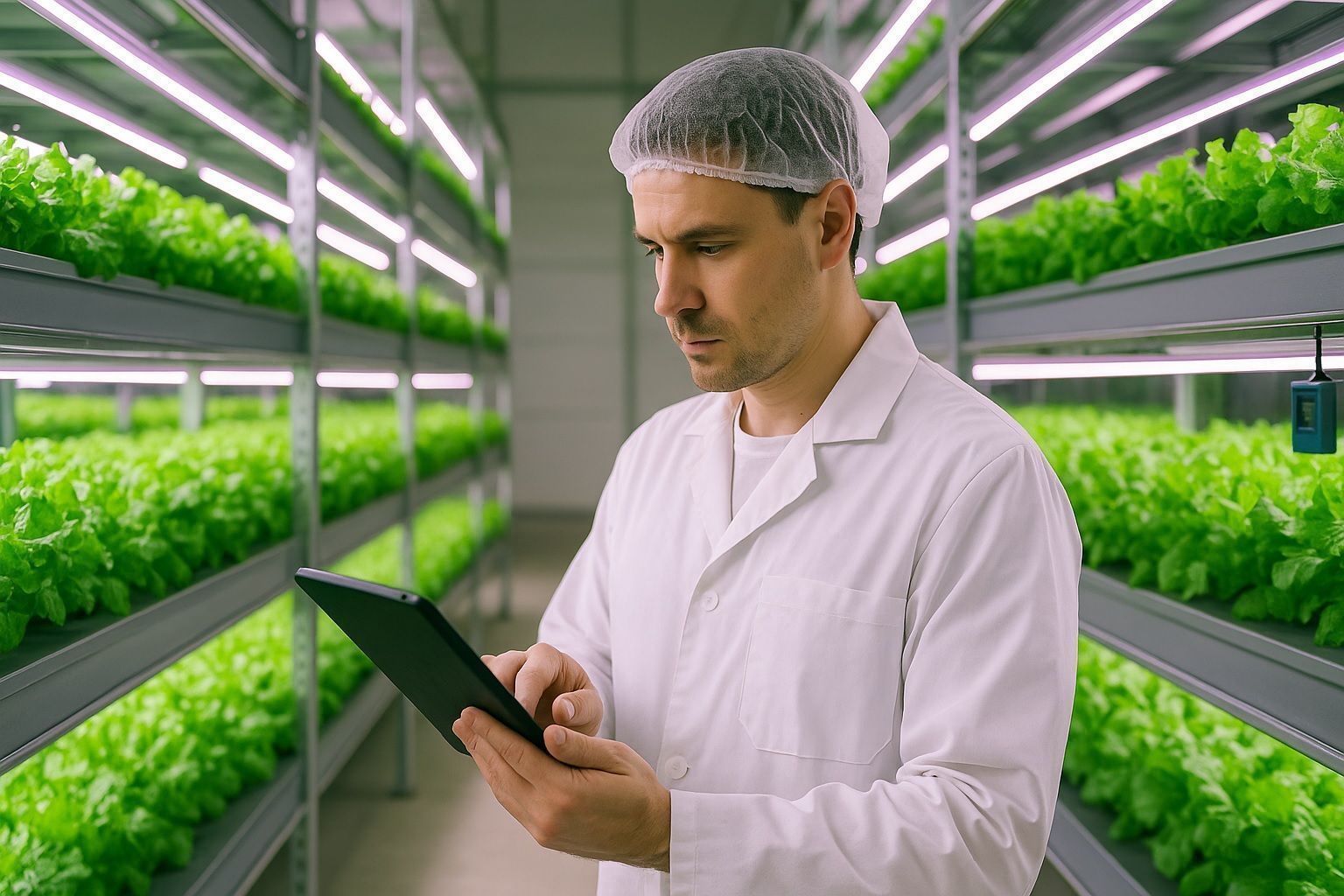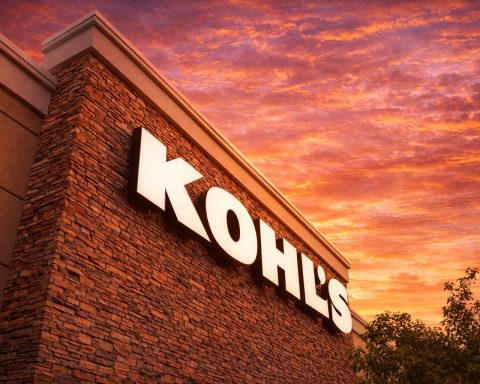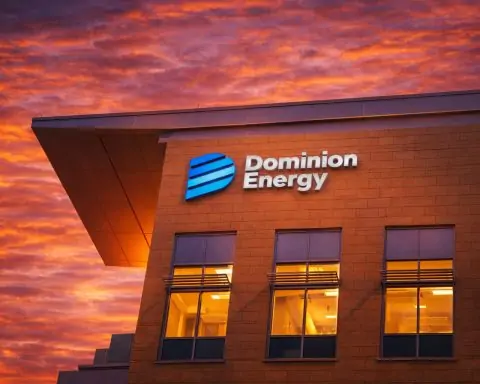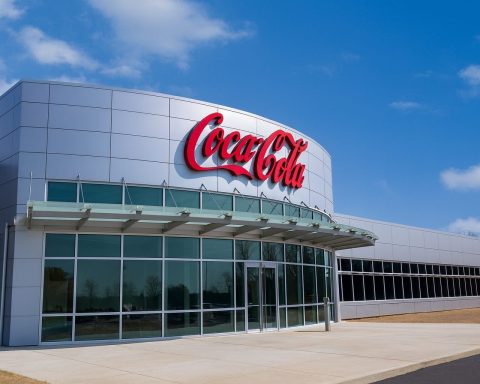- Eeki, the Indian agtech startup, secured $7 million in funding led by Sixth Sense Ventures to expand its IoT-powered aeroponic network across India.
- The investment supports scaling after Eeki already built 100 acres of climate‑controlled farms in arid Rajasthan and rolling out third-generation growing chambers and R&D.
- Planet Farms (Italy) is investing £25+ million to construct a 20,000 m² vertical farm in the UK with production planned by 2027, mirroring its Milan flagship of 10,000+ m² that supplies over 25% of Italian retail leafy greens.
- Plenty Unlimited emerged from Chapter 11 bankruptcy in late May 2025, refocusing on its Los Angeles area vertical strawberry farm developed with Driscoll’s and commitments with Walmart.
- Square Roots, co‑founded by Kimbal Musk, deployed its fifth shipping-container farm hub in Kentucky in partnership with Gordon Food Service to co‑locate farms at distribution centers.
- Bustanica in Dubai, a 330,000 ft² vertical farm backed by Emirates Airline, began direct‑to‑consumer e‑commerce in June via a Careem partnership delivering greens to Dubai and Abu Dhabi.
- Limagrain and Abu Dhabi’s ADQ announced a joint venture on desert‑adapted crop genetics, with ADQ taking a 35% stake.
- Norsk Mat completed the acquisition of AeroFarms, the U.S. pioneer that filed Chapter 11 in 2023, aiming to bring AeroFarms’ indoor farming know‑how to Scandinavia.
- OnePointOne and AutoStore unveiled the Opollo automated farm near Phoenix, a fully robotic facility for sowing, harvesting and packing produce.
- In Slovakia, StoreField launched its first in‑store herb growing tower in Bratislava, allowing shoppers to buy live basil and mint grown on‑site under LED lights.
- Additionally, the U.S. Department of Agriculture announced $14.4 million in Urban Agriculture and Innovative Production grants for 2025 to support local indoor farms and related programs.
Period Covered: This report highlights key vertical farming and controlled-environment agriculture (CEA) news from June and early July 2025, with a global perspective encompassing North America, Europe, Asia, and the Middle East.
Commercial Announcements and Partnerships
New Funding & Expansion: Indian agtech startup Eeki secured a fresh $7 million investment led by Sixth Sense Ventures to expand its IoT-powered aeroponic farming network across India [1]. Eeki has already built 100 acres of climate-controlled farms in arid Rajasthan, and the new funding will roll out third-generation growing chambers and R&D to diversify crops [2]. Co-founders highlight that 30% of their team is focused on R&D to maximize yield with minimal resources, aiming to reframe how Indians think about nutrition and freshness [3]. In Europe, Planet Farms (Italy) is investing £25+ million to construct a 20,000 m² vertical farm in the UK, slated to start production by 2027 [4]. The UK facility will mirror Planet Farms’ flagship near Milan (covering 10,000+ m²) which already supplies over 25% of Italian retail leafy greens and serves Swiss retailers [5]. This large-scale, end-to-end automated farm is designed to serve major retail and foodservice clients with sustainable, local produce and even specialty ingredients for beverages and cosmetics [6].
New Facilities & Partnerships: In the US, Plenty Unlimited emerged from Chapter 11 bankruptcy in late May with a court-approved reorganization, refocusing on its core strength: indoor strawberry farming [7]. The restructured Plenty aims to scale up its Los Angeles-area vertical strawberry farm (developed with Driscoll’s) and fulfill prior commitments with partners like Walmart [8] [9]. Also in North America, Square Roots (co-founded by Kimbal Musk) celebrated deploying its fifth shipping-container farm hub in partnership with Gordon Food Service – this time in Kentucky – continuing its model of co-locating farms at distribution centers to shorten supply chains [10] [11]. In the Middle East, Dubai’s landmark Bustanica vertical farm (a 330,000 ft² facility backed by Emirates Airline) ventured into direct-to-consumer e-commerce in June: it partnered with Careem (a delivery app) to bring fresh leafy greens straight to online customers in Dubai and Abu Dhabi [12]. Meanwhile, an emerging UAE-based operator, Greeneration, gained attention for running a high-end vertical farm in Dubai that supplies edible flowers, microgreens and specialty leaves to luxury restaurants and hotels [13] – illustrating the region’s appetite for premium CEA produce.
Industry Consolidation: The period also saw strategic moves to streamline operations. France’s seed giant Limagrain announced talks with Abu Dhabi’s ADQ to form a joint venture focused on desert-adapted crop genetics, with ADQ taking a 35% stake – a deal aligning with Middle East food-security efforts and potentially synergistic with local vertical farms [14]. Additionally, Norway’s Norsk Mat completed its acquisition of crisis-hit AeroFarms (a U.S. pioneer that had filed Chapter 11 in 2023), aiming to inject fresh capital and bring AeroFarms’ indoor farming know-how to Scandinavia (this follows AeroFarms’ emergence from bankruptcy in 2H 2024). These developments signal a phase of industry consolidation, where stronger players, new investors, and even governments are picking up assets and IP from earlier vertical farming ventures in distress.
Technological Innovations and Product Updates
Automation and New Platforms: Vertical farming tech took a leap forward with innovative collaborations. In the U.S., startup OnePointOne partnered with AutoStore (a warehouse automation firm) to unveil the Opollo automated farm – a pilot indoor facility near Phoenix that employs advanced robotics for sowing, harvesting, and packing produce. This fully robotic vertical farm platform demonstrates how automation can slash labor needs and improve consistency in CEA operations. Similarly, Grow-tec, an Israeli CEA company, is emphasizing hands-off growing: it presented a “zero-distance, zero-pesticide” indoor farming system for fruiting crops that uses 95% less water and heavily integrates automation [15] [16]. Grow-tec’s 2025 strategy, as explained by VP Rafael Emergui, positions it as a vendor-agnostic solutions provider offering strong ROI models to greenhouse operators and food retailers interested in moving indoors [17] [18]. The company has eliminated much of the unpredictability of conventional farming for crops like tomatoes, and is actively demonstrating its systems to prospective clients to accelerate adoption of indoor fruiting vegetable production [19] [20].
In-Store and Consumer Solutions: New product formats also hit the market. In Slovakia, StoreField® launched its first in-store herb growing tower at a Bratislava fresh market, allowing shoppers to buy live basil and mint grown on-site under LED lights [21]. This plug-and-play vertical mini-farm exemplifies retail-integrated agriculture, maintaining ultra-fresh produce for customers. On the consumer end, U.S.-based ALTOGarden introduced the GX Hydroponic Tower – a compact home vertical gardening system with built-in LED grow lights [22]. Despite a 20″×20″ footprint, the GX Tower can grow 24 plants year-round using a recirculating aeroponic system that reuses ~95% of water and accelerates growth up to 3× faster than soil gardening [23] [24]. This device targets urban dwellers and families seeking fresh greens without the mess, offering automated watering cycles and a clean, sleek design for indoor use [25] [26]. The flurry of tech updates – from large-scale robots to kitchen-counter farm kits – highlights how CEA innovation is advancing both industrial and consumer-level farming.
Energy and Environment Tech: Efficiency remains a key focus in CEA. Notably, Skytree deployed carbon-capture units at Netherlands-based Koppert Cress to supply concentrated CO₂ to their vertical farm, aiming to boost plant growth while cutting emissions [27]. HVAC specialists are also tailoring solutions: Desert Aire released new climate control systems for vertical farms to maintain consistent temperature and humidity, critical for stacked crops [28]. In the UK, a startup rolled out a CO₂ sequestration module for greenhouses and vertical farms, capturing waste CO₂ and recycling it to the crop environment [29]. These tech improvements, from climate systems to AI-driven monitoring, are geared toward tackling vertical farming’s biggest hurdles – high energy use and climate control – to improve sustainability and profitability.
Government Policies, Subsidies, and Regulatory Developments
Asia – Singapore’s High-Tech Farming Push: Singapore is aggressively supporting CEA as part of its “30 by 30” food security goal (30% local nutrition by 2030). In June, officials highlighted investments in urban indoor farms, vertical hydroponics, and aquaculture to boost domestic production [30] [31]. One example is entrepreneur Lin Bingxin’s Urban Farming Partners Singapore, which uses Dutch vertical farming technology to grow kale and lettuce inside repurposed buildings [32]. The government has created an Agri-Food Innovation Park in Lim Chu Kang, where automated, AI-managed farms (including a 2-hectare vertical “plant factory” by Taiwan’s Yuantong Green Energy) are being built to produce thousands of tons of vegetables annually [33]. Alongside funding precision farming R&D, Singapore is also mandating stronger food resilience measures (e.g. requiring importers to hold larger grain reserves) to complement its high-tech agriculture drive [34]. These initiatives underscore how state policy and subsidies in Singapore are catalyzing CEA adoption to reduce reliance on imports.
Europe – Support and Strategy: In the UK, the government’s new Industrial Strategy (June 2025) explicitly recognized agri-tech and CEA as priority sectors. The National Farmers’ Union lauded this as a “huge win” after lobbying for agriculture’s inclusion [35]. The strategy pledges to tackle high energy costs and regulatory barriers that have hindered indoor farms, and to drive innovation in areas like precision breeding. (Notably, UK researchers recently developed a dwarf tomato yielding 4× more fruit annually, tailored for vertical farms – a breakthrough made possible by the UK’s 2023 Precision Breeding Act that encourages such R&D [36] [37].) Across the EU, policymakers are channeling grants into urban agriculture: e.g. the EU’s Horizon program funded multiple vertical farming demos in 2025, and Innovation Norway provided grants for automated vertical farm pilots to boost Norway’s self-sufficiency [38] [39]. Several European cities (Paris, Amsterdam, Helsinki) have also updated zoning laws to facilitate rooftop greenhouses and vertical farms, often accompanied by tax incentives for locally grown produce. These policy moves reflect a broader trend of governments treating CEA as critical infrastructure for food security and climate resilience.
Middle East – National Food Security Initiatives: The Gulf region continued to heavily back CEA. The UAE launched its inaugural Emirates Agriculture Conference & Exhibition 2025 (held May 28–31 in Al Ain) under the patronage of the UAE’s Vice President [40]. The conference is part of the UAE’s “Plant the Emirates” program, aimed at greening deserts and promoting sustainable agri-tech to achieve the National Food Security Strategy 2051 [41] [42]. It convened global experts to discuss vertical farming, modern hydroponics, agri-biotech and youth involvement in agriculture [43] [44]. The UAE government’s support is also evident via entities like ADQ, which (as noted) is investing in seed genetics for desert farming and has stakes in local vertical farm ventures. Likewise, Saudi Arabia expanded its subsidy program for indoor farming equipment in June, offering to cover up to 50% of costs for growers adopting water-saving hydroponic systems. These government initiatives in the Middle East are driving a rapid build-out of CEA capacity – exemplified by projects like Bustanica in Dubai (producing 1,000+ tons of greens/year) and upcoming mega-farms in Saudi’s NEOM city – all aiming to localize food production in water-scarce climates.
North America – Grants and Standards: In the U.S., federal support for urban and controlled environment ag continues. The USDA announced $14.4 million in Urban Agriculture and Innovative Production grants for 2025, funding community hydroponic farms, school CEA labs, and pilot projects in dozens of cities [45] [46]. These grants help nonprofits and municipalities launch or expand local indoor farms, often in food deserts, and include technical assistance to ensure project viability. Some U.S. states are also stepping up: Pennsylvania, for example, rolled out a CEA grant program in June to retrofit old buildings into vertical farms, and Ohio authorized tax credits for controlled-environment horticulture businesses. On the regulatory front, industry groups are working with the FDA and USDA to refine safety standards for indoor-grown produce – a June symposium in Washington discussed tailored GAP protocols for vertical farms, aiming to bolster consumer trust after a series of high-profile recalls of field-grown greens. As CEA gains prominence, government oversight and support in the U.S. are evolving, balancing promotion of innovation with ensuring food safety and economic feasibility.
Academic and Scientific Research Findings
Crop Breeding for CEA: Researchers are actively developing plant varieties optimized for indoor farming conditions. In late June, Arizona State University unveiled a new compact tomato cultivar called “Desert Dew” bred specifically for fast, resilient growth in extreme climates and indoor systems [47]. According to ASU’s HortScience publication, Desert Dew tomatoes mature 3–4 weeks faster than conventional varieties and have a dwarf stature ideal for high-density vertical farming [48] [49]. The plant is determinate with short internodes, making mechanical harvesting feasible in CEA, and notably is capable of self-pollination thanks to a unique flower structure (a boon for indoor setups where bees are impractical) [50] [51]. Nutritionally, it also packs higher vitamin C than standard tomatoes. In the UK, a precision-breeding startup at Rothamsted Research has engineered a miniaturized tomato (derived from the popular Ailsa Craig variety) that yields 1 kg of fruit on a plant just one-sixth the normal size – enabling up to 300 kg per square meter annually in vertical farms [52] [53]. Trials with commercial growers (Harvest London and Jones Food Company) in spring 2025 showed excellent flavor and 4× productivity gains over traditional cultivars [54] [55]. These breakthroughs in genomics and breeding address one of vertical farming’s challenges – broadening beyond leafy greens – by creating high-yield, short-stature fruits and other crops tailored to indoor environments.
CEA Crop Management Studies: Academia is also optimizing cultivation techniques for CEA. A Belgian consortium (Inagro, PCH, Delphy) provided a June update on the PlantGoed strawberry project, which experiments with lighting and chilling strategies for indoor strawberry propagation [56]. One trial found that artificially darkening strawberry seedlings for a week induced earlier flower formation (by early August vs. September in controls), though final yields in spring were similar ~6–7 kg per linear meter [57]. Another experiment grew everbearing varieties Karima and Florice without any cold storage (“fresh plant” technique) and saw surprisingly strong results – by late May, fresh-planted berries yielded up to 4.4 kg/m, outproducing the conventionally chilled plants, with 80–92% of fruits graded Class 1 quality [58] [59]. These findings suggest that alternative propagation methods (like fresh planting vs. cold storage) can boost output and quality for indoor berries. In a related vein, Wageningen University published a study on nutrient optimization for indoor herbs, revealing that a brief exposure to mild salinity stress can enhance flavor compounds in hydroponic thyme – a tactic growers might use to differentiate premium indoor herbs. Such research underscores how fine-tuning environmental parameters (light spectra, photoperiods, nutrient recipes) in controlled agriculture can maximize yield and crop quality, and are helping transform CEA from art to science.
Environmental Impact and Efficiency: Scientists continue to evaluate the sustainability of vertical farming. A June 2025 life-cycle analysis from the University of Bonn compared the carbon footprint of vertically farmed lettuce in Germany vs. imported field lettuce. It found the vertical lettuce had higher energy use (due to lighting), but when powered by renewable electricity and accounting for avoided air freight from Spain, the net emissions were comparable. Moreover, the vertical system used 95% less water and eliminated pesticide runoff. In the U.S., a Cornell study measured that indoor farms produce 60–70% less post-harvest food waste thanks to proximity to consumers and longer shelf life – supporting the claim that CEA can reduce supply chain losses [60]. However, researchers caution that energy efficiency improvements (e.g. LED efficacy, HVAC recycling) are crucial for vertical farms to truly outperform traditional agriculture on environmental metrics. The good news: a Nature Food paper in July reported that next-gen LEDs and smart climate control could cut a vertical farm’s energy use by ~27%, potentially making certain crops’ footprint definitively lower than open-field by 2030. Academic research in 2025 is thus not only boosting crop performance but also guiding the industry on how to achieve the most sustainable indoor farming practices.
Market Forecasts and Industry Analysis
Strong Market Growth Projections: Market analysts remain bullish on the growth of CEA. A recent IMARC report projects the Europe indoor farming market (including vertical farms and greenhouses) will grow at 9.2% CAGR from 2025 to 2033, reaching ~$38 billion by 2033 [61]. Key drivers include growing consumer demand for pesticide-free produce, the push for year-round local food in urban centers, and increasing adoption of AI and automation to improve yields [62] [63]. Globally, the vertical farming segment is expected to see particularly robust expansion in Asia and the Middle East – regions where arable land is limited. MarketData forecasts the Asia-Pacific vertical farming market will surpass North America by 2028, fueled by heavy investment in countries like China, Japan, and the UAE. Industry reports also highlight a shift in crop focus: while leafy greens still dominate indoor farming (over 250 commercial sites growing them worldwide), high-margin crops like berries, tomatoes, and herbs are growing fastest in market share, as companies seek better unit economics.
Consolidation and Investment Trends: Industry analysis in mid-2025 acknowledges a paradox: demand for CEA produce is rising, but venture investment in vertical farming startups has cooled compared to the 2020–2021 peak [64]. According to AgFunder’s 2025 AgriFoodTech report, funding for “novel farming systems” (which includes vertical farms) fell by 53% in 2024 [65]. This pullback is largely due to high-profile stumbles – e.g. Bowery Farming’s costly facility closure in late 2024 – and investor skepticism about profitability, given high energy costs and past overoptimistic projections [66] [67]. However, analysts see this as a healthy correction rather than a crash. Stronger players are still attracting capital: Ohio-based 80 Acres Farms raised $115 million in early 2025 (at a $1.2 billion valuation) to scale up salad green production for major retailers [68], and Canada’s GoodLeaf Farms (profitable in its region) secured new funding for expansion. The consensus is that investors now favor CEA companies with a clear path to profitability – those that control costs, automate aggressively, and perhaps integrate renewable energy [69] [70]. For example, a New York project, Empire State Greenhouses, is building a 385,000 ft² vertical farm powered entirely by onsite solar and biogas, a model expected to significantly cut operating costs [71] [72]. Market analysts predict that as interest rates stabilize and energy-efficient tech spreads, successful vertical farming ventures could again see accelerated investment by 2026, especially with the tailwinds of government food-security programs.
Strategic Reports: In late June, iGrow News released its comprehensive 2025 European Indoor Farming Report, offering insight into regional trends [73]. Key findings include an ongoing consolidation in the greenhouse industry – fewer but much larger operators – and a strong push toward automation in propagation, lighting, and climate control across both greenhouses and vertical farms [74] [75]. European CEA companies are increasingly integrating hybrid models (for instance, large greenhouse growers adding vertical stacks for seedlings and young plants to save space and improve uniformity) [76]. The report also notes that capital markets in Europe are maturing: while venture funding is selective, there’s growing interest from strategic investors (e.g. equipment suppliers and food corporates) in partnering with or acquiring CEA startups. Additionally, a GCC-focused report slated for Q3 2025 will analyze the booming indoor farming scene in the Gulf, where government-backed megaprojects are creating new opportunities. Overall, market analyses in mid-2025 portray an industry that is steadily growing and evolving – moving past the initial hype, learning from failures, and zeroing in on sustainable, scalable business models for the future of indoor agriculture.
Expert Commentary and Opinion
Industry experts and commentators weighed in on vertical farming’s trajectory during this period, offering both optimism and hard truths:
- Profitability through Crop Focus: A Bloomberg analysis on June 17 highlighted that after a wave of bankruptcies, many vertical farm companies are pivoting their crop strategies to chase profits. Instead of trying to grow everything, they’re zeroing in on high-value niche crops like berries and microgreens. “Vertical farms can be profitable if they work on the right combination of crops,” notes 80 Acres Farms co-founder Mike Zelkind, whose firm grows salad greens alongside other produce (like strawberries and herbs) to balance revenue streams [77]. This diversified approach contrasts with earlier startups that only grew lettuce and couldn’t cover costs. The expert consensus is that items commanding premium prices (e.g. flavorful strawberries year-round, specialty herbs, baby greens for chefs) may justify the high operational costs of CEA better than commodity lettuce. Analysts in The Brink newsletter observed that Plenty and Oishii (both known for strawberries) are exemplars of this trend, betting that consumers will pay top dollar for consistent, high-quality berries grown indoors – especially as these farms scale and drive costs down [78].
- Learning from Failures: Thought leaders like Henry Gordon-Smith (CEO of Agritecture) have framed recent setbacks as valuable lessons. In a March CEAG World column, he pointed out that “the market for CEA-grown greens, berries, and herbs is growing, but investors are stepping back, wary of high energy costs and unproven models” [79]. He argues this is prompting a necessary course correction: vertical farm startups must prove unit economics before chasing rapid expansion [80]. Gordon-Smith emphasized cost control and efficiency, noting that companies like Little Leaf Farms (a U.S. greenhouse greens grower) and GoodLeaf in Canada succeeded by expanding gradually and integrating energy-efficient tech [81] [82]. His piece distilled key missteps of some failed firms – overengineering farms without a clear ROI, scaling up too fast, and underestimating electricity costs [83] – and contrasted them with the disciplined approach of survivors. The takeaway from such commentary is clear: hype has given way to pragmatism in the vertical farming sector. Investors and founders alike are focusing on sustainable growth, realistic financial modeling, and incremental innovation.
- Sustainability and Mission: Opinion writers also stress the enduring why of vertical farming. A July editorial in Environment & Energy Leader acknowledged recent challenges but reaffirmed that indoor farming remains crucial for a climate-unpredictable future. Citing sustainability benefits (water savings, pesticide elimination, local production reducing food miles), the piece contends that vertical farming’s long-term value proposition – as a tool for food security in cities and harsh climates – is “too important to abandon.” Instead of asking if vertical farming will succeed, it suggests the question has become how and when it will scale sustainably. The article encourages stakeholders to continue R&D in renewable energy integration for CEA and to pursue public-private partnerships (like the UAE and Singapore models) to share initial costs. The optimistic stance is that by 2030, vertical farms will be a common feature near major cities, each perfected to grow specific crops efficiently, and serving as a complement to traditional agriculture in feeding a growing population.
- Voices from the Field: Lastly, growers and entrepreneurs have been sharing on-the-ground perspectives. In a HortiDaily interview, a Dutch greenhouse grower transitioning to indoor vertical layers remarked, “We’re not replacing greenhouses; we’re augmenting them. It’s about choosing the right crop for the right system.” Similarly, a UAE farming executive noted that local consumer acceptance of hydroponically grown produce is rising, helped by education and supermarket tastings. These commentaries reflect a maturing narrative: vertical farming is finding its realistic place in the agricultural ecosystem. As one commentator put it, the goal is not to grow every crop in a warehouse, but to sustainably grow the best crops in a warehouse – and 2025’s developments are a step closer to figuring out exactly what those are.
Sources: Recent news and reports were synthesized from industry publications, press releases, and expert analyses, including VerticalFarmDaily [84] [85], iGrow News [86] [87], New AG International [88], Bloomberg (The Brink) [89], CEAg World [90] [91], and various government and market research reports [92] [93]. Each cited source is referenced in the text for detailed context. This global roundup demonstrates that the vertical farming and CEA industry – though navigating adjustments – continues to innovate and expand in pursuit of sustainable, secure food production.
References
1. www.verticalfarmdaily.com, 2. www.verticalfarmdaily.com, 3. www.verticalfarmdaily.com, 4. scottishgrocer.co.uk, 5. scottishgrocer.co.uk, 6. scottishgrocer.co.uk, 7. igrownews.com, 8. igrownews.com, 9. www.capstonepartners.com, 10. rejournals.com, 11. rejournals.com, 12. www.linkedin.com, 13. igrownews.com, 14. igrownews.com, 15. igrownews.com, 16. igrownews.com, 17. igrownews.com, 18. igrownews.com, 19. igrownews.com, 20. igrownews.com, 21. igrownews.com, 22. www.verticalfarmdaily.com, 23. www.verticalfarmdaily.com, 24. www.verticalfarmdaily.com, 25. www.verticalfarmdaily.com, 26. www.verticalfarmdaily.com, 27. www.capstonepartners.com, 28. www.verticalfarmdaily.com, 29. www.verticalfarmdaily.com, 30. www.verticalfarmdaily.com, 31. www.verticalfarmdaily.com, 32. www.verticalfarmdaily.com, 33. www.verticalfarmdaily.com, 34. www.verticalfarmdaily.com, 35. www.verticalfarmdaily.com, 36. www.verticalfarmdaily.com, 37. www.verticalfarmdaily.com, 38. www.eu-startups.com, 39. www.eu-startups.com, 40. www.verticalfarmdaily.com, 41. www.verticalfarmdaily.com, 42. www.verticalfarmdaily.com, 43. www.verticalfarmdaily.com, 44. www.verticalfarmdaily.com, 45. www.usda.gov, 46. www.usda.gov, 47. www.verticalfarmdaily.com, 48. www.verticalfarmdaily.com, 49. www.verticalfarmdaily.com, 50. www.verticalfarmdaily.com, 51. www.verticalfarmdaily.com, 52. www.verticalfarmdaily.com, 53. www.verticalfarmdaily.com, 54. www.verticalfarmdaily.com, 55. www.verticalfarmdaily.com, 56. www.verticalfarmdaily.com, 57. www.verticalfarmdaily.com, 58. www.verticalfarmdaily.com, 59. www.verticalfarmdaily.com, 60. www.eu-startups.com, 61. www.einpresswire.com, 62. www.einpresswire.com, 63. www.einpresswire.com, 64. www.ceagworld.com, 65. www.ceagworld.com, 66. www.ceagworld.com, 67. www.ceagworld.com, 68. www.capstonepartners.com, 69. www.ceagworld.com, 70. www.ceagworld.com, 71. www.ceagworld.com, 72. www.ceagworld.com, 73. indoor.ag, 74. indoor.ag, 75. indoor.ag, 76. indoor.ag, 77. www.linkedin.com, 78. www.capstonepartners.com, 79. www.ceagworld.com, 80. www.ceagworld.com, 81. www.ceagworld.com, 82. www.ceagworld.com, 83. www.ceagworld.com, 84. www.verticalfarmdaily.com, 85. www.verticalfarmdaily.com, 86. indoor.ag, 87. igrownews.com, 88. www.linkedin.com, 89. www.linkedin.com, 90. www.ceagworld.com, 91. www.ceagworld.com, 92. www.einpresswire.com, 93. www.usda.gov










